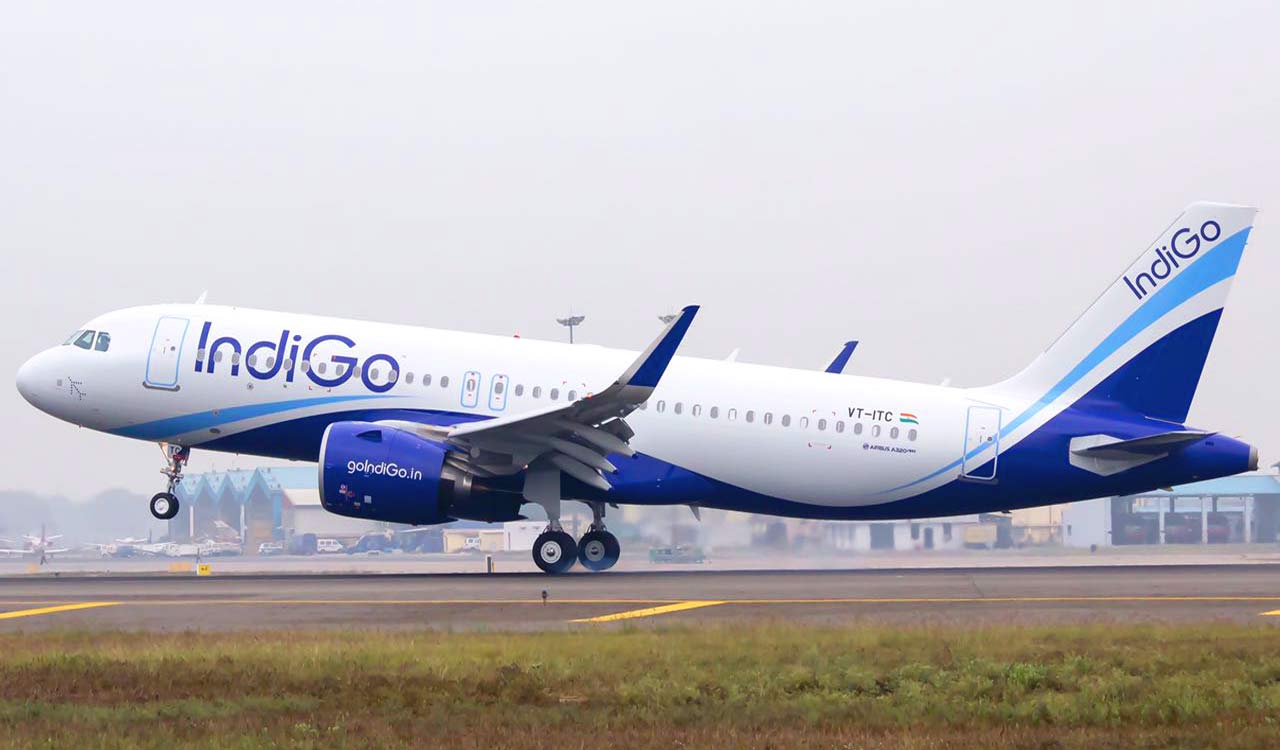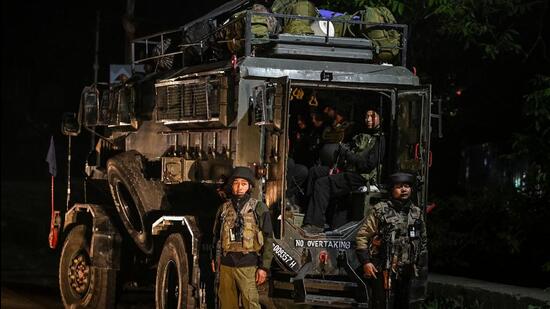development
The construction of the Over Head Tank and the development of Gandigwad-Tigadoli and Gandigwad-K. Bagewadi
Roads under the leadership of Dr. Anjali Tai Nimbalkar, MLA of Khanapur Taluka, have been instrumental in promoting economic growth in the area.

Roads under the leadership of Dr. Anjali Tai Nimbalkar, MLA of Khanapur Taluka, have been instrumental in promoting economic growth in the area. The Box Culvert on Bedaratti-Gundenatti Road and the Retaining Wall to Gandigwad Tank (near Handur Road) are essential infrastructural facilities that have improved the living standards of the people in the area. These initiatives have been a significant boost to the economic development of the area, and they have resulted in the creation of job opportunities, which has contributed to improving the standard of living of the people.
The construction of 271 Anganwadi buildings, provision of water tap connections to more than 100 households, and the construction of nine classrooms for the Khanapur High Primary School are crucial initiatives that have significantly impacted the lives of the people in the area. Dr. Nimbalkar’s efforts have been instrumental in promoting education and health facilities in the area, and they have contributed to improving the quality of life of the people.
Dr. Nimbalkar’s dedication towards the development of the area is commendable. Her initiatives have brought a positive change in the lives of the people in the Gandigwad Gram Panchayat, and they are an example of how effective leadership can bring about a significant change in the lives of people.
development
Air New Zealand direct flights,

Air India and Air New Zealand to Launch Direct Flights by 2028: Boosting Travel and Trade
Travelers between India and New Zealand will soon enjoy shorter and more convenient journeys, as Air India and Air New Zealand plan to introduce direct flights by 2028. The two airlines have signed a Memorandum of Understanding (MoU) to explore the direct service, aiming to improve air connectivity and reduce travel time.
Currently, passengers traveling between the two countries face long layovers at major transit hubs in Southeast Asia or Australia. The direct flights will streamline travel, making it more efficient and comfortable.
MoU Signed to Introduce Direct Flights by 2028
As part of the agreement, Air India and Air New Zealand—both members of the Star Alliance—will collaborate to:
- Expand their existing codeshare partnership.
- Establish a direct flight service by 2028.
- Enhance travel convenience and reduce travel duration.
The partnership is expected to benefit both leisure and business travelers, providing a seamless travel experience.
Current Travel Challenges Between India and New Zealand
At present, there are no direct flights between India and New Zealand. Travelers must transit through airports in:
- Singapore
- Kuala Lumpur
- Sydney or Melbourne
These layovers extend the total travel time to 17 hours or more, making the journey lengthy and inconvenient. A direct flight will significantly cut travel time, offering a faster and more comfortable option.
Impact on Tourism, Trade, and Education
The introduction of direct flights will have a positive impact on several sectors:
-
Tourism Growth:
- New Zealand is a popular destination for Indian tourists, offering scenic landscapes, adventure activities, and cultural experiences.
- Direct flights will make New Zealand more accessible, attracting more Indian travelers.
-
Strengthened Trade Relations:
- The direct route will benefit business travelers, enabling quicker and more frequent trips for trade, conferences, and business collaborations.
- It will also facilitate faster transportation of goods, boosting bilateral trade.
-
Educational and Family Travel:
- With a large Indian student community in New Zealand, direct flights will simplify travel for students and their families.
- The improved connectivity will also benefit people visiting relatives and friends.
Growing Demand for Direct Air Connectivity
The demand for direct flights between India and New Zealand is rising due to:
- Increasing tourism exchanges between the two nations.
- Expanding trade and business relations, requiring more efficient travel.
- Growing Indian diaspora in New Zealand, with regular family visits.
Direct flights will cater to this demand, offering a faster, smoother, and more convenient travel experience.
Faster and More Convenient Travel by 2028
The collaboration between Air India and Air New Zealand is a significant step toward enhancing air connectivity. With direct flights expected by 2028, travelers will benefit from reduced travel time, improved convenience, and better access to tourism, business, and educational opportunities.
As the two airlines work on implementing the direct route, passengers can look forward to a more seamless travel experience between India and New Zealand.
development
New Major Step Towards ‘Make in India’
India is witnessing a sharp increase in demand for trained pilots due to its rapidly expanding aviation market. To address this need,

Hisar to Host India’s First Private Trainer Aircraft Manufacturing Facility
Sakthi Group and Diamond Aircraft to Boost Domestic Aircraft Production
In a major boost to India’s aviation industry, Tamil Nadu-based Sakthi Group has partnered with Austria’s Diamond Aircraft Industries to set up India’s first private-sector trainer aircraft manufacturing facility in Hisar, Haryana. This landmark initiative is expected to revolutionize flight training in India by supplying state-of-the-art DA40 NG aircraft to flying training organizations (FTOs) across the country.
Meeting the Growing Demand for Pilot Training
India is witnessing a sharp increase in demand for trained pilots due to its rapidly expanding aviation market. To address this need, Sakthi Aircraft Industry—a joint venture between Sakthi Group and Diamond Aircraft—has signed an agreement with the Aero Club of India to supply 200 DA40 NG trainer aircraft to various flight training schools.
The first 50 aircraft will be imported as complete knocked-down (CKD) kits from Austria and Canada for assembly in India, while the remaining 150 will be manufactured at a new final assembly line (FAL) in Hisar.
Hisar Aerodrome to Become a Key Aviation Hub
The Hisar aerodrome has been strategically chosen as the location for the aircraft manufacturing facility due to its growing aviation infrastructure. The facility is expected to produce 100 aircraft annually, significantly contributing to India’s self-reliance in aviation training and reducing dependence on foreign imports.
This initiative aligns with the Government of India’s ‘Make in India’ and ‘Atmanirbhar Bharat’ programs, promoting indigenous manufacturing and enhancing the country’s aerospace capabilities.
Economic and Employment Impact
The establishment of this trainer aircraft manufacturing unit in Hisar is expected to generate substantial employment opportunities in sectors such as aircraft assembly, engineering, supply chain management, and logistics. Additionally, it is likely to attract further investments in the aviation sector, making Hisar a crucial player in India’s aerospace ecosystem.
Conclusion
The upcoming private trainer aircraft manufacturing facility in Hisar marks a historic milestone for India’s aviation sector. Spearheaded by Sakthi Group and Diamond Aircraft, this initiative will enhance flight training infrastructure, support India’s self-reliance goals, and stimulate economic growth in Haryana. With production set to begin by the end of 2025, India is poised to become a key player in the global trainer aircraft manufacturing industry.
development
A New Look at India’s Economic Growth
Growth Momentum and Sectoral Drivers: India is expected to maintain robust GDP growth, driven by key sectors such as infrastructure,

Economic Survey 2025: India’s Path to Global Economic Leadership
India’s Economic Survey 2025, delivered by Finance Minister Nirmala Sitharaman after President Droupadi Murmu’s address, presents an optimistic outlook for the country’s future, with projections suggesting India could soon become the third-largest economy in the world. The Survey provides an in-depth analysis of India’s economic performance, policy reforms, and key challenges as the nation prepares for the upcoming fiscal year.
President Murmu’s Address: India’s Rise on the Global Stage
President Droupadi Murmu’s speech marked the beginning of the Budget session, where she highlighted India’s economic resilience and potential. The Economic Survey 2025 echoes her sentiment, predicting that India’s focus on reforms, sustainable growth, and infrastructure development will propel it toward its goal of becoming the world’s third-largest economy.
Economic Survey 2025: Key Insights and Projections
The Economic Survey 2025 is a comprehensive document that outlines the current state of India’s economy and its future prospects. Key highlights include:
- GDP Growth and Economic Drivers: India’s GDP growth is projected to remain strong, supported by infrastructure development, manufacturing, and technological advancements. The government’s initiatives to promote digitalization and self-reliance will be critical in driving this growth.
- Reforms and Structural Changes: The Survey emphasizes the government’s commitment to structural reforms, including tax simplification, improving the ease of doing business, and enhancing financial inclusion. These measures are designed to foster a more competitive and investor-friendly economy.
- Sustainable Development and Green Economy: India’s focus on a green economy is underscored in the Economic Survey, with substantial investments in renewable energy, green infrastructure, and sustainable technologies. These efforts are expected to drive long-term growth while addressing environmental concerns.
Challenges on the Horizon: Tackling Inflation, Currency Depreciation, and Rural Growth
The Economic Survey 2025 also highlights the key challenges India faces in achieving its growth targets:
- Global Economic Uncertainty: The ongoing global slowdown and trade tensions may pose risks to India’s export sector. The government’s strategy to boost domestic consumption is crucial in ensuring resilience against external shocks.
- Currency Depreciation and Inflation: The depreciation of the Indian Rupee and rising inflation could dampen consumer spending and increase the cost of imports. Effective monetary and fiscal policies will be required to stabilize the economy.
- Inclusive Growth: Ensuring that growth reaches all segments of society, especially rural areas, remains a significant challenge. The government is expected to implement targeted measures to address income disparity and promote inclusive growth.
Union Budget 2025: What to Expect
The Union Budget 2025, to be presented shortly after the Economic Survey, will focus on several key areas to support economic growth:
- Infrastructure and Digital Economy: Investment in infrastructure, particularly in rural areas, is expected to be a major focus, alongside initiatives to enhance digital infrastructure and connectivity.
- Employment and Skill Development: Job creation in emerging sectors and skill development programs will be central to the Budget’s priorities. Special attention will likely be given to preparing the workforce for the evolving demands of the global economy.
- Social Welfare and Healthcare: The Union Budget will likely allocate significant resources for social welfare programs, particularly in healthcare and education, to ensure equitable growth and improve the quality of life for all citizens.
India’s Economic Future is Promising
The Economic Survey 2025 presents a clear roadmap for India’s rise as a global economic leader. By focusing on infrastructure, sustainability, reforms, and job creation, India is set to achieve its goal of becoming the third-largest economy in the world. The Union Budget 2025 will be crucial in setting the tone for the next phase of India’s growth journey.
development
New Historical Saga like No Other
The release of the teaser for “Jaane Tu,” a pivotal song from Chhaava, has set social media ablaze. With music by AR Rahman, vocals by Arijit Singh,

“Jaane Tu” Song Teaser: AR Rahman and Arijit Singh Bring History to Life in Chhaava
The teaser for the much-awaited song “Jaane Tu” from Chhaava has dropped, and fans are already buzzing with excitement. Composed by AR Rahman, sung by Arijit Singh, and penned by Irshad Kamil, the track promises to be a beautiful ode to love and sacrifice. With Vicky Kaushal and Rashmika Mandanna leading the way, the song’s teaser gives us a glimpse of the powerful chemistry between the two actors in this historical epic.
AR Rahman’s Music: A Soundtrack for the Ages
AR Rahman’s involvement in Chhaava has raised the stakes for the film’s soundtrack, and “Jaane Tu” is shaping up to be a masterpiece. The teaser showcases Rahman’s signature style, with sweeping orchestral arrangements, delicate harmonies, and powerful instrumental sections that elevate the emotional tone of the film. His music serves as the perfect backdrop to the grandeur and intimacy of the love story between Maharani Yesubai and Chhatrapati Maharaj.
Rahman’s ability to create music that evokes deep emotions makes “Jaane Tu” not just a song but an experience. As the full track is set to release, fans can expect a musical journey that complements the film’s historical setting and emotional themes.
Arijit Singh’s Soul-Stirring Voice
Arijit Singh’s voice brings a touch of magic to “Jaane Tu.” Known for his ability to convey a wide range of emotions, Arijit’s soulful rendition of the song adds layers of depth to the love story at the center of Chhaava. In the teaser, his voice stands out for its raw, emotional quality, perfectly capturing the longing and devotion between the two lead characters.
Arijit’s heartfelt delivery guarantees that “Jaane Tu” will be more than just a song—it will be a defining moment in the film, resonating deeply with the audience.
Vicky Kaushal and Rashmika Mandanna: A Royal Love Affair
The emotional core of Chhaava lies in the love story between Maharani Yesubai, played by Rashmika Mandanna, and Chhatrapati Maharaj, portrayed by Vicky Kaushal. The teaser gives us a first look at their royal chemistry, with a tender moment where Rashmika greets Vicky with a puja thali. This simple yet meaningful gesture highlights the deep emotional bond shared between the two characters.
Vicky and Rashmika’s performances promise to bring a layer of authenticity and emotional depth to the historical narrative, setting the stage for a truly captivating love story.
The Visual Grandeur of Chhaava
In addition to its musical brilliance, Chhaava boasts stunning visual elements that transport viewers to a bygone era. The film’s opulent palace settings, intricate costumes, and breathtaking cinematography add to its grandeur. The teaser perfectly captures the film’s rich color palette and attention to detail, enhancing the cinematic experience.
The visual splendor of Chhaava works in harmony with the powerful music, creating a world where history, love, and devotion come to life.
Jaane Tu: A Song for the Heart
“Jaane Tu” is not just a song but a key narrative element of Chhaava. Written by Irshad Kamil, the lyrics speak to themes of loyalty, sacrifice, and undying love. The song’s melody and Arijit’s emotive voice perfectly complement these themes, making “Jaane Tu” an integral part of the film’s emotional journey. As fans eagerly await the full release of the song, there’s no doubt that it will leave a lasting impact on the audience.
A Musical Journey Through Time
With AR Rahman’s musical genius, Arijit Singh’s emotive voice, and Irshad Kamil’s poignant lyrics, “Jaane Tu” is set to be a defining song in Chhaava. The teaser has already created anticipation, and as the full track releases, it promises to become a timeless anthem of love and devotion. Chhaava’s blend of music, emotion, and visual grandeur is sure to captivate audiences and make “Jaane Tu” a standout track in 2025.
development
A New Beginning for Indian History
The report, titled ‘Antiquity of Iron: Recent Radiometric Dates from Tamil Nadu’, is co-authored by K Rajan, a professor of History

Tamil Nadu’s Iron Age Origins Push Global Timelines Back
In a groundbreaking discovery, researchers have traced the roots of the Iron Age in Tamil Nadu to the 4th millennium BCE. This revelation places the region far ahead of established global timelines for iron usage, which traditionally credit Mesopotamia and Egypt as early adopters of metallurgy.
The findings, authored by K Rajan of Pondicherry University and R Sivanantham from the Tamil Nadu State Department of Archaeology, offer a transformative perspective on the origins of the Iron Age, highlighting Tamil Nadu’s advanced technological achievements.
Mayiladumparai: The Cradle of Ancient Iron Metallurgy
Mayiladumparai, a key archaeological site in Tamil Nadu, has become the focal point of this historical breakthrough. Excavations unearthed iron tools, smelting remnants, and burial artifacts that date back to 4,000 BCE.
The radiometric dating of these artifacts, conducted by international laboratories, underscores the region’s sophisticated understanding of metallurgy. This discovery not only showcases Tamil Nadu’s innovative spirit but also positions it as a central figure in the global history of technological progress.
Radiometric Dating Confirms Early Iron Use in Tamil Nadu
The study utilized radiometric dating techniques to establish the age of the artifacts. The results, verified by multiple laboratories, highlight the meticulous scientific approach undertaken by the researchers.
Iron tools and implements from Mayiladumparai demonstrate a level of craftsmanship and resourcefulness that is unparalleled for its time. The discovery suggests that Tamil Nadu’s ancient inhabitants were pioneers in harnessing the power of iron for practical and ceremonial purposes.
CM Stalin Urges Recognition of Tamil Nadu’s Historical Significance
Unveiling the findings, Tamil Nadu Chief Minister M K Stalin emphasized the importance of rewriting history to reflect this monumental discovery. “The history of the Indian subcontinent must begin here, in Tamil Nadu,” he declared, stressing the need for global recognition of the state’s contributions to early human advancement.
The Chief Minister also announced initiatives to preserve the Mayiladumparai site and promote Tamil Nadu’s rich archaeological heritage. These efforts aim to position the state as a focal point for future research in ancient history and technology.
Global Implications of Tamil Nadu’s Iron Age Timeline
This discovery reshapes our understanding of global history by redefining the origins of the Iron Age. Tamil Nadu’s technological advancements, dating back to 4,000 BCE, challenge established narratives and highlight the region’s pivotal role in the evolution of human civilization.
Tamil Nadu’s Place in World History
Tamil Nadu’s Iron Age discovery is more than an academic milestone; it is a testament to the state’s enduring legacy of innovation and cultural richness. As the world reevaluates its historical timelines, Tamil Nadu’s role as a pioneer in early metallurgy will stand as a defining chapter in human history
development
New Implications for Swiss Investments in India
As a result, Swiss companies operating in India, including global giants like Nestlé, will no longer benefit from the favorable tax regime previously offered.

Swiss Government Suspends MFN Clause: What It Means for India
On December 11, 2024, Switzerland took a significant step by suspending the MFN clause in the Double Taxation Avoidance Agreement (DTAA) with India. This clause, which had previously ensured favorable tax treatment for Swiss investors, is now suspended following a Supreme Court ruling that India’s tax law could not enforce the provisions of the DTAA unless formally incorporated into domestic law.
As of January 2025, Swiss companies such as Nestlé will face higher taxes on their dividends and royalties in India, which could lead to an increased cost of doing business in the country. This change has the potential to affect the overall business climate, especially for Swiss firms with substantial investments in India.
How the Supreme Court’s Ruling on Taxation Affects Swiss Investments
The Indian Supreme Court’s 2023 ruling redefined how the DTAA is implemented, directly impacting Swiss companies operating in India. Before the ruling, Swiss companies benefitted from the MFN clause, which prevented double taxation on their earnings. Now, with the suspension of this clause, companies like Nestlé will be subjected to higher tax rates on dividends and other income generated in India.
This ruling raises concerns among Swiss investors, who may now reconsider or delay future investments in India due to the new tax environment. The shift also poses a risk to Swiss multinational companies that view India as a key growth market.
Tax Implications for Indian Companies Operating in Switzerland
While the suspension of the MFN clause primarily affects Swiss companies in India, Indian firms operating in Switzerland are also set to feel the impact. As Switzerland’s tax policies tighten, Indian businesses will face higher tax rates on royalties, dividends, and interest income in Switzerland.
This could make it harder for Indian companies to maintain competitive margins in the Swiss market, prompting them to seek more favorable tax jurisdictions within Europe. The change in tax treatment is likely to influence corporate decision-making regarding Swiss operations and investments.
Is the $100 Billion Investment Plan in Jeopardy?
The timing of Switzerland’s decision to suspend the MFN clause is critical, given the $100 billion investment deal signed between India and the European Free Trade Association (EFTA) in March 2024. Swiss companies, which are a key part of this deal, may now hesitate to follow through with their investment commitments, particularly as tax rates rise.
The Swiss government has expressed concerns over the tax treatment of dividends, which could slow or even halt the flow of investments from Switzerland to India. This uncertainty casts doubt on the future of the $100 billion deal and could result in renegotiations to address the new tax framework.
The Path Forward for India-Switzerland Relations
As the situation unfolds, India and Switzerland will need to engage in diplomatic discussions to resolve the tax issues. Both nations stand to lose from prolonged uncertainty, and a solution must be found to protect their economic interests.
For India, it will be essential to ensure that foreign investments continue flowing into the country, while for Switzerland, keeping its firms competitive and attractive to international investors is critical. Both countries have much to gain from a collaborative resolution to the current tax dispute.
Switzerland’s suspension of the MFN clause could have serious consequences for Swiss investments in India and the broader $100 billion trade agreement. The Supreme Court’s ruling and the subsequent tax changes have created a period of uncertainty that both India and Switzerland will need to address in order to protect their economic relationships.








